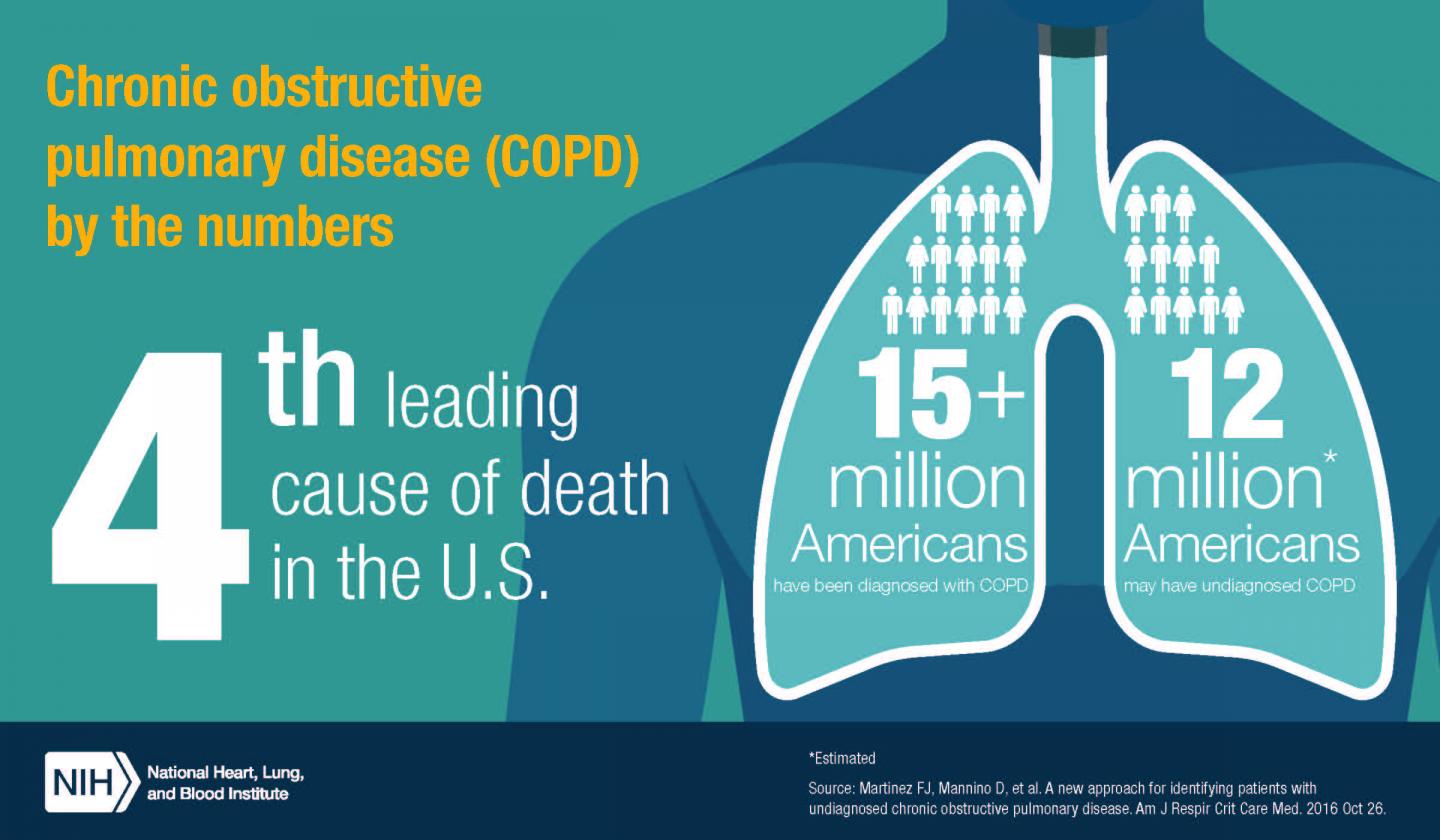
Credit: National Heart, Lung, and Blood Institute
A new study provides evidence to support a simple measurement for diagnosing clinically significant airflow obstruction, the key characteristic of chronic obstructive pulmonary disease (COPD), the fourth leading cause of death in the United States. The study found that a 70% ratio of two indicators of lung function proved as or more accurate than other thresholds for predicting COPD-related hospitalizations and deaths.
The study was funded by the National Heart, Lung, and Blood Institute (NHLBI), part of the National Institutes of Health, and its findings were published online today in the Journal of the American Medical Association. Approximately 16 million Americans have COPD, and it is estimated that millions more have the disease and do not know it.
The research, which draws on a wide range of multi-ethnic studies, validates current guidelines from major respiratory societies and contributes to identify a fixed threshold of disease severity. This approach has led to great strides in early detection and treatment of other conditions such as hypertension and diabetes.
“Diagnosis of airflow obstruction remains a major hurdle to improving care for patients with COPD,” said James Kiley, Ph.D., director of the NHLBI Division of Lung Diseases. “This validation of a fixed threshold confirms the usefulness of a simple approach for assessment of the disease. As we celebrate the 50th anniversary of the Division of Lung Diseases, this rigorous analysis of populations-based, multiethnic studies is yet another example of research we fund that improves clinical practice, public health, and patient care.”
To monitor lung function and gauge the severity of a lung disease, doctors use spirometry, a test that measures several indicators. Those include the ratio of forced expiratory volume in one second (FEV1) – that is, the amount of air exhaled forcefully in one second – over forced vital capacity (FVC) – or the full amount of air that can be forcefully exhaled in a complete breath. The two values are usually proportional; and lower ratios are seen in individuals with obstructive lung diseases, such as asthma or COPD.
The researchers aimed to determine how accurate various thresholds were in predicting COPD-related hospitalizations and mortality. For that, the NHLBI Pooled Cohorts Study analyzed data from four U.S. population-based studies that collected spirometry results and followed up participants for COPD-related clinical events. The study included 24,207 adult participants, of which 54% were women, 69% white, and 24% black.
“The selection of a threshold for defining airflow obstruction has major implications for patient care and public health, as the prevalence of the condition could vary by more than a third depending on the metric used,” said study author Elizabeth C. Oelsner, M.D., M.P.H., the Herbert Irving Assistant Professor of Medicine at Columbia University, New York City. “Defining ‘normal’ lung function is very challenging in diverse and changing populations, and certain approaches might interpret low levels of lung function as normal in women, non-whites, or the elderly. We were able to show that a simple fixed threshold worked well in our study’s very diverse sample, which improves the generalizability of our results.”
The researchers said establishing a diagnostic threshold that is easy to use not only is critical to improving the adoption of spirometry in primary care; it may also result in earlier detection and treatment for patients.
###
Study: Bhatt, SP et al. Discriminative Accuracy of FEV1:FVC Thresholds for COPD-Related Hospitalization and Mortality. JAMA. 2019;321(24):2438-2447. doi:10.1001/jama.2019.7233
About the National Heart, Lung, and Blood Institute (NHLBI): NHLBI is the global leader in conducting and supporting research in heart, lung, and blood diseases and sleep disorders that advances scientific knowledge, improves public health, and saves lives. For more information, visit http://www.
About the National Institutes of Health (NIH): NIH, the nation’s medical research agency, includes 27 Institutes and Centers and is a component of the U.S. Department of Health and Human Services. NIH is the primary federal agency conducting and supporting basic, clinical, and translational medical research, and is investigating the causes, treatments, and cures for both common and rare diseases. For more information about NIH and its programs, visit http://www.
Media Contact
NHLBI Engagement and Media Relations Branch
[email protected]




